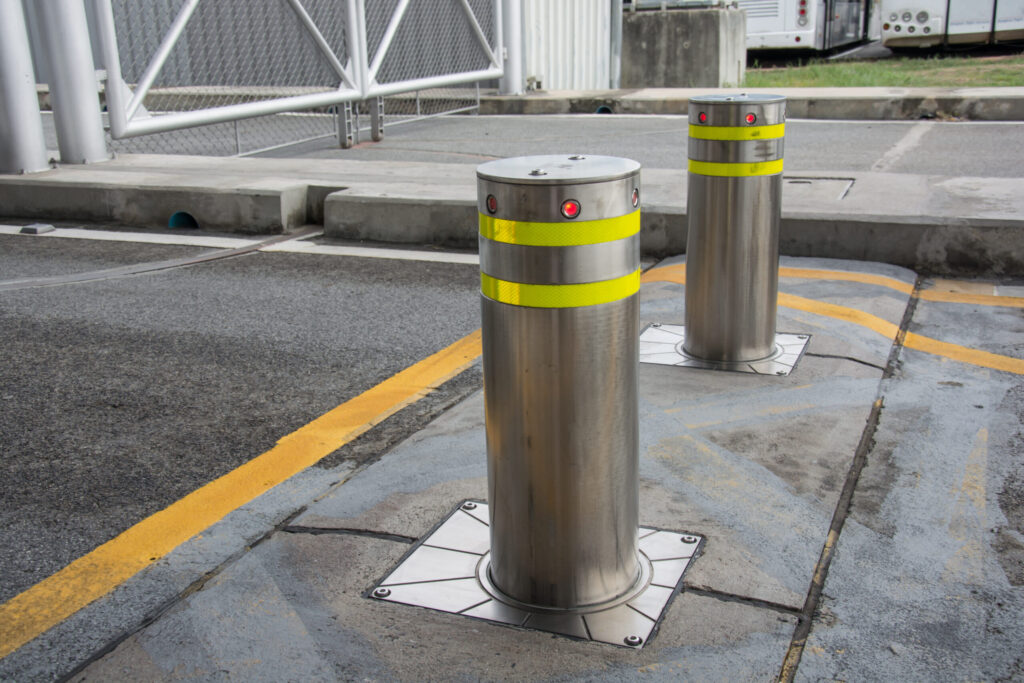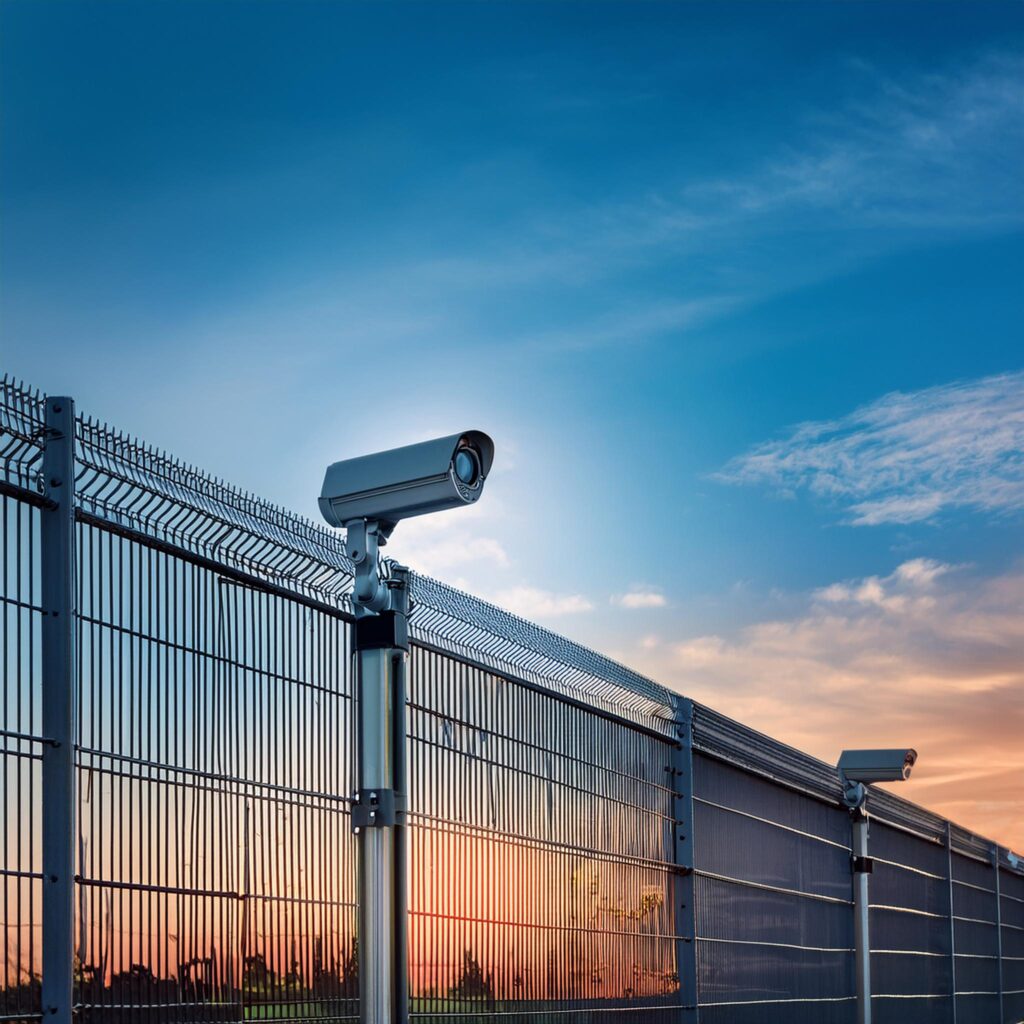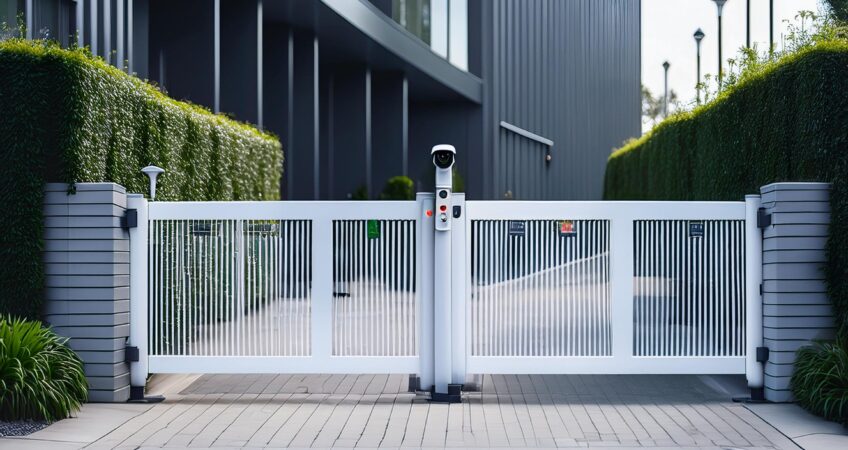Article by Lars Mascera – Marketing Manager
Since the dawn of civilization, from ancient fortresses guarding empires to medieval castles standing against invaders, humanity has understood the importance of securing its most valuable assets. Today, commercial properties face modern threats like theft, vandalism, and unauthorized access, making the need for robust perimeter security as crucial as ever. Perimeter security isn’t just about erecting barriers; it’s about building a strategic defense system that deters potential threats long before they reach your gates. And as threats evolve, so too should your approach to perimeter security, ensuring that your business remains safeguarded against potential risks.

Understanding Perimeter Security Systems When considering perimeter security, it’s essential to look beyond the obvious. Modern perimeter security systems incorporate advanced technology and physical barriers to create a robust first line of defense. These systems can include surveillance cameras, motion sensors, intrusion detection systems, and even thermal imaging devices.
For example, a large distribution center may use a combination of high-resolution surveillance cameras and motion sensors along its perimeter. The cameras provide real-time monitoring, while the sensors alert security personnel to any unusual activity. When integrated with a central monitoring station, they offer a comprehensive view of the entire property, allowing for immediate action when a threat is detected.

Barriers and Gates Barriers and gates are foundational elements of perimeter security, serving as the first physical line of defense. The type of barrier or gate chosen depends on the specific needs of the business and the level of security required.
- Fences: Fencing is a basic yet effective barrier that defines property boundaries and deters casual intruders. For example, chain-link fences offer visibility, which can be advantageous for surveillance, while still presenting a physical obstacle. However, they can be vulnerable to cutting or climbing, so adding barbed wire or anti-climb paint can enhance their effectiveness.
- Walls: For businesses requiring higher security, walls provide a formidable barrier that is difficult to breach. Concrete or brick walls, often topped with razor wire, can prevent climbing and cutting, offering greater protection than standard fencing. They are also useful for reducing noise and maintaining privacy.
- Bollards: Bollards are sturdy, vertical posts used to prevent vehicle access. They are especially useful in protecting entrances, pedestrian areas, and buildings from vehicle ramming attacks. Retractable bollards offer flexibility, allowing authorized vehicles to pass through when needed.
- Gates: Security gates vary widely in design and function. Sliding gates are common for high-traffic areas, providing controlled access without compromising security. Swing gates, often used in conjunction with fences, offer a visually imposing barrier that can be automated for convenience. Crash-rated gates, designed to withstand vehicle impact, are crucial for high-security areas such as government facilities or data centers.

Planning Your Perimeter Security System When planning a perimeter security system, several factors must be taken into account. The size and layout of the property, the nature of the business, and the level of risk all play a role in determining the most appropriate solutions.
For instance, a retail center might focus on preventing theft and vandalism, necessitating a combination of fencing, gates, and surveillance systems. On the other hand, a warehouse in a remote location may require more robust barriers like bollards and walls to protect valuable inventory from organized theft.
It’s also essential to consider the scalability of the system. As your business grows or the threat landscape changes, your security needs will evolve. Opting for a system that can be easily expanded or upgraded ensures long-term protection.
Integration with Existing Systems One of the strengths of modern perimeter security systems is their ability to integrate seamlessly with existing security infrastructure. Whether you’re using access control systems, alarm panels, or even smart building technology, a well-designed perimeter security system can work in tandem with these devices to create a cohesive security strategy.
For example, integrating perimeter security with an access control system allows for automatic locking of gates if a breach is detected. Similarly, when paired with video analytics software, your surveillance cameras can automatically identify suspicious behavior and trigger alarms or notifications.
Specific Surveillance Devices Each component of a perimeter security system serves a unique purpose. Here’s a closer look at some of the most critical devices:
- Surveillance Cameras: High-definition cameras monitor the perimeter in real time, capturing clear footage that can be used for incident review and evidence collection.
- Motion Sensors: These devices detect movement within restricted areas, immediately alerting security personnel to potential intrusions.
- Intrusion Detection Systems: Typically installed along fences or walls, these systems detect attempts to breach physical barriers and trigger alarms.
- Thermal Imaging Cameras: Ideal for low-light or foggy conditions, these cameras detect heat signatures, allowing for detection of individuals or vehicles that might be missed by traditional cameras.
The Benefits of Perimeter Security Investing in perimeter security offers several key benefits. Firstly, it serves as a visible deterrent to potential intruders. The presence of cameras, alarms, and physical barriers can discourage unauthorized individuals from attempting to breach the property.
Moreover, perimeter security systems help businesses maintain operational continuity. By preventing unauthorized access, companies can avoid disruptions that could lead to financial losses or compromised safety. Additionally, advanced systems can offer valuable insights into security vulnerabilities, allowing businesses to proactively address weak points before they are exploited.
Perimeter security is an essential component of a comprehensive security strategy for commercial businesses. By investing in the right combination of barriers, gates, and advanced technologies, and integrating them with your existing systems, you can create a secure environment that protects your assets, employees, and customers.

